“It’s always incredible how much you can learn and the number of skills you can acquire over these three-hour sessions.”
Gwethalyn said this to the participants today, and it is really amazing when you think about it: The actors met for the first time less than two weeks ago, they have had only six sessions together, and here they are, making improvised performances with each other as a cohesive ensemble. It is a powerful feeling and a testament to the work to observe how much growth the participants have had. There were times that their focus and commitment was absolutely gripping, enough to capture the attention of the most skeptical audience member. Of course, we could continue to pursue the work we do in the exploration phase and grow more, and certainly, we did that today. But it is clear: the participants are almost ready for the next stage!
Starting today’s work, we played a game of Antiquated Telephone. Each actor sat around the room, observing another actor. The goal was to remain as still as possible, but if an actor moved even the slightest bit, then the observer would repeat the movement slightly exaggerated. Thus, the movement would travel around the group getting more outlandish with each go. Like a ripple across the room, shoulder adjustments turned to actors flopping on the floor. A slight neck twitch turned into a head roll that eventually became the actors spinning their whole bodies like tops. Watching the waves of gestures traverse around the group served as a good reminder how the smallest adjustment on stage will signal loudly to an audience, and so we must do our best to stay aware of our unconscious moments.
Next, Megan instructed the actors to sit like cats. Then they were told to feel a beam of sunlight on their skin and, like a cat, fall asleep in it. When they woke up, they were being tormented by a “horrible piece of red string.” The actors clawed, pounced, and swatted the imaginary string. Then, when they were all tuckered out, they fell back asleep. They repeated this process several more times, but with different qualities. First, they were marionette cats, and so the actors loosely flopped and flailed to try and get the string. Then they were claymation cats. This one was much more subtle, but some of the actors really got a handle on it and gave their movements the rigidly smooth quality of stop-motion. Also, because they were made of clay, they played with melting and being reformed. Finally, they became robot cats, making their string chasing stiff, precise, and calculated. The LEDs in their eyes burned bright red with hatred for the stings until they were powered down to sleep mode once more.
After the actors turned back into humans, we slow motion raced. This involved the participants lining up and then running as slow as they could to the other side. What was important to remember, as Jim always says, is that “running is just controlled falling.” So the only part of the race where they were to move quickly is when their weight takes their foot to the ground. Besides that, they used all of their energy to get to the other side as slow as possible. If done correctly, it should be just as exhausting as if they were sprinting. I took a time lapse video of their race to see if it looked anything like running sped up:
After time for a quick recovery, the actors moved on to the next exercise. Split into groups and given scarves, the participants received a set of rules: If the scarf is on the floor, you can move however you want, but if it is not touching the ground, then you must move in slow motion. Through experimenting, the actors quickly developed relationships with the scarves and each other as they silently worked. They were also challenged to try and drop the emotional relationship they had developed, and instead make abstract performances based on visual interest. This game was one of the times that the focus in the room was absolutely astounding. I’m going to post a lot of pictures because they speak for the actors’ work much better than I can. Also, they look fantastic!
Then it was time for participants to make some hard decisions. Over the past six sessions, they have read plays from twelve different avant-garde playwrights and learned from their techniques. Now, with the readings finished, the participants had to decide which authors’ styles they wanted to continue exploring. Ranking their favorite styles, the actors chose which techniques they want to focus on when writing and staging their own pieces. All of our work so far has led up to this decision, and it is the first step into the writing phase of the workshop. Groups will be made from actors with similar interests, and once they decide the target story at the next session, the exploration phase will be complete.
But we are not ready to move on quite yet, and so when the participants finished making their choices, we played a few more games. First, the actors broke into pairs and one partner was instructed to push the other with just a finger. They experimented with how their partner responded to a forceful or delicate push as well as where on the body they pushed. Some actors squished up their faces as their partner prodded their nose, and others let their arms swing back and forth from a poke. Things got even more interesting when the actors were told to push their partners with only their eyes. Now, the participants being pushed looked like they were being attacked by phantom forces as their partners attempted to move them with their gaze. Some looked with such intensity it bore holes into their partners’ heads, others darted their eyes in the direction they wanted to push their partner, and one even tried covering their eyes and then revealing them when they wanted to push. Also, the pushing was given qualities, such as it burned or spiders were shooting out of the eyes. The actors really responded strongly to these prompts. Finally, they were put into groups and one actor was tasked with pushing the rest of their group together.
Moving back into partners, next the actors played with stopping and starting. The rules were simple: both partners had to be moving together or still together. Who starts? Who stops? Each pairing had to decide for themselves when they moved. During the exercise, Gwethalyn reminded us that “we started with stopping and starting on our own and now here we are doing it together!” Another wonderful reminder of how far we’ve come. Next, we moved into stopping and starting as a whole group. This required an astronomical amount of focus from the participants as they had to keep track of everyone because anyone had the power to stop or start it. When the actors were slow to respond to each other, a ripple of stillness would pass through the group. But when they got it right on, it looked as if someone had hit the pause button on their TV remote. It was very impressive.
To finish the session, we played a couple of rounds of Gibberish Wars. Split into two groups, each group had a leader who would combine sound and movement into a gesture that their group members would repeat behind them. The two groups went back and forth as they were led through a debate, war, diplomacy, and finally a celebration. The actors were reminded to perform with confidence, even when they were not sure what they were repeating was correct. On another round, the groups were instructed to be rival baking shows. Of course, this war could only end one way: an imaginary pie straight to the face! We all laughed plenty. With the session over, we were all excited about the work we had done today and about the work we are about to embark on next.
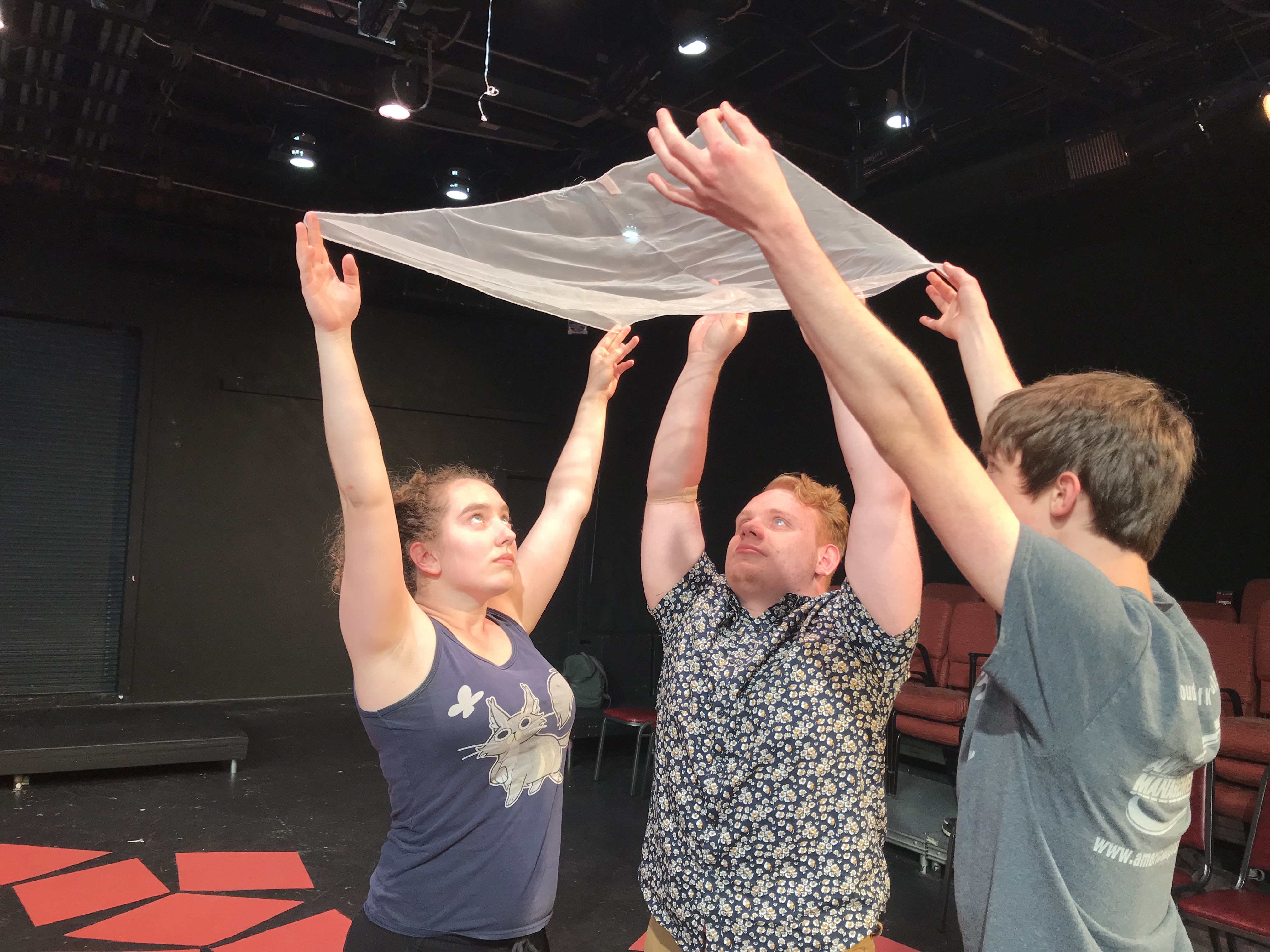






















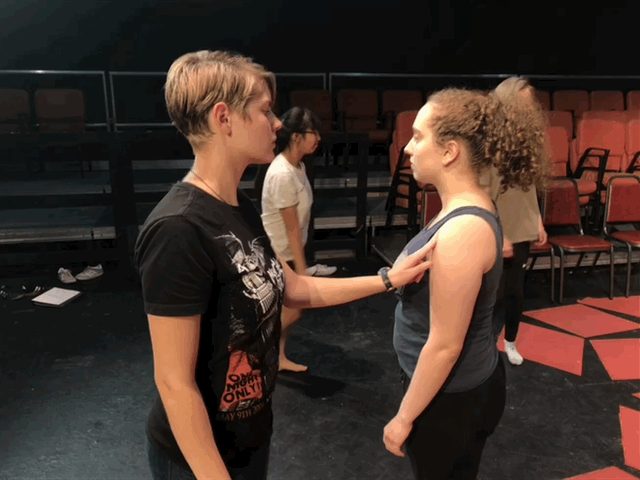

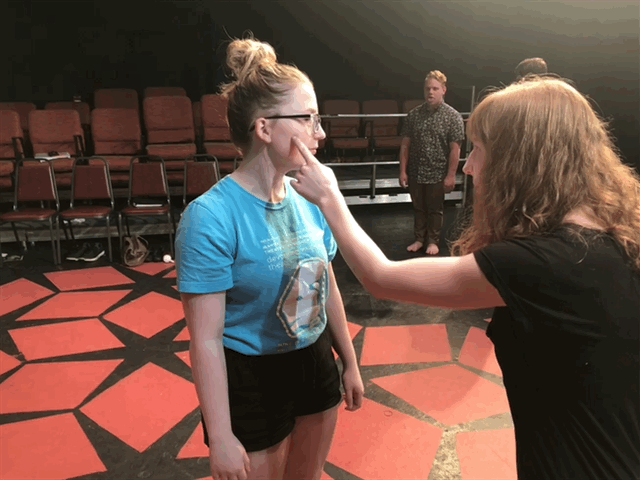


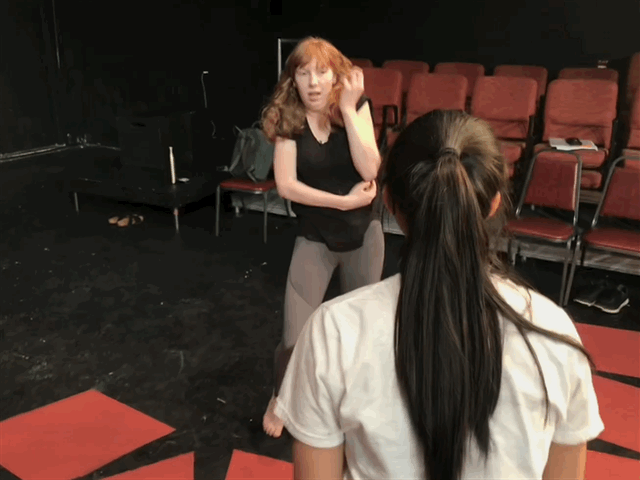

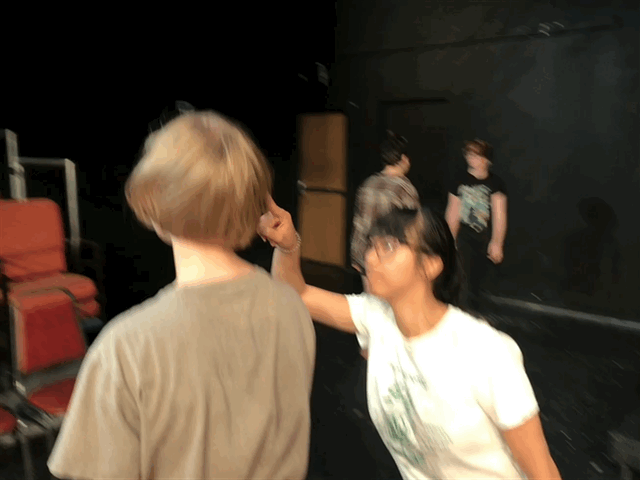


Leave a Reply
You must be logged in to post a comment.